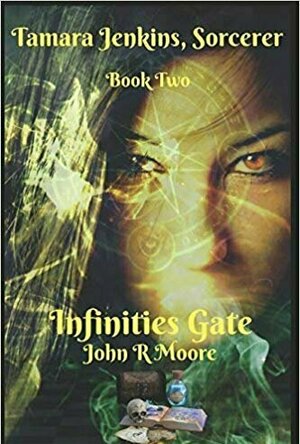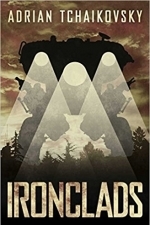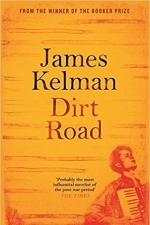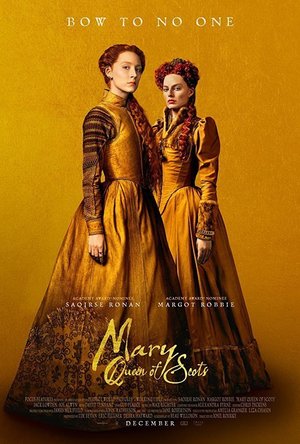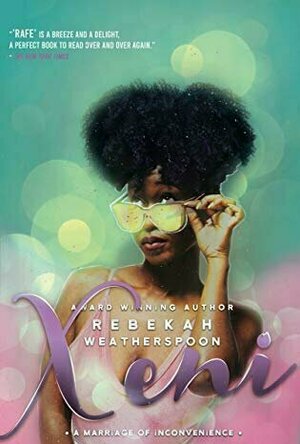EmersonRose (320 KP) rated Infinities Gate in Books
Nov 20, 2019
Infinities Gate is the second book in the Tamara Jenkins, Sorcerer series by author John R. Moore. It tells the story of archaeology professor Tamara Jenkins and the magical world of wizards she does not just fall into but becomes one of the greatest wizards and leader against the fight against darkness. In this book, Tamara and her husband mysteriously disappear on their honeymoon, and it is up to their friends to find them. Along the way, they discover the Infinities Gate and realize that they must keep the gate from opening or risk releasing chaos itself. When talking about his book series Moore says it is “In the order of Indiana Jones crossed with Merlin.” This statement perfectly sums up the atmosphere of the book. This was the crossover I never knew I needed. This mashup was an imaginative and clever premise that immediately had me hooked into the first book which continued into the second.
The story begins quickly, showering you with information, questions, and mysteries. This kind of beginning hooked my attention immediately and made it hard to put the book down. This story is filled with mysteries, interesting twists, and exciting adventures. From wizards to Norse gods, Moore delves into the fantastical intricacies of myths and legends while still making the stories his own. You can’t help but root for Tamara as she makes her way through these magical adventures. I really liked seeing her growth in both books and found her to be an interesting and fun heroine to follow on this journey.
The Celtic and Scottish history is something I love learning about so getting to read about it, and the magical side of it was very exciting for me. My love for both Indiana Jones and Arthurian legend fueled this fascination with this story. From the very beginning of the book, it connected itself to these histories and had events taking place in some of the most magical feeling places in the world like Stonehenge and the Isle of the Sky. This setting brought the magic and history into the book beautifully.
I was very impressed with Moore’s writing style. His descriptions of the world are beautiful as is his attention to the details of history. His characters have a depth which is integral for me in any book I read. I enjoyed reading this series so much I am excited to look into some of his other work. His interest in science fiction and fantasy stories align very much with my favorite genres to read. I cannot wait for the third book in this series so I can continue my journey with the wonderful Tamara. This was a very enjoyable book that offered a quick read into a magical world. I would highly recommend this book to fantasy readers!
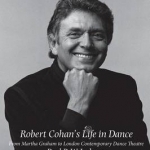
The Last Guru: The Authorised Biography of Robert Cohan
Book
Robert Cohan is part of the pantheon of American contemporary choreographers which includes Alvin...

Isle of Skye: 2016
Book
Are you planning a visit to the Isle of Skye? Do you enjoy a walk in the country or a leisurely...
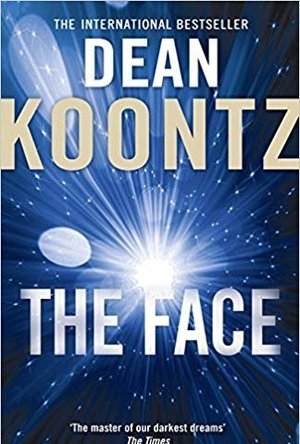
The Face
Book
Acknowledged as "America's most popular suspense novelist"("Rolling Stone" ) and as one of today's...
I have read Adrian Tchakovsky's Shadows of the Apt series and loved it.
I recently read his Dogs of War and enjoyed it. However I think this has somewhat tainted Ironclads for me.
Ireonclads sees us again in the near-future where the UK (read as England which annoyed me, being Scottish) has gained independence from Europe and subsequently gone bust and been bought over by the USA. The USA is likewise invading or at war with much of the rest of the world. These wars are now fought mainly in corporate interest (but then what's new *cough gulf war cough*) with armies of poorly equipped government soldiers being dent in to conflict occasionally supported by corporate playboys (generally the heir to the corporate fortunes) in their massive armoured scion suits (hence iron-clad) where they are fully protected from pretty much everything. These playboys tend to be captured by each other and ransomed back to their families, guffawing at their japes all the way.
The story sees one small group of US soldiers sent in to deepest darkest Sweden to rescue one such playboy who got himself too far ahead of the army and appears to have gone missing but without ransom (without his scion suit).
Being a short (200 pages) book worked well for me, I felt any more scenes or narrative would have felt like padding and this was its natural length.
However, for me this book felt like the notes or background story to Dogs of War and has suffered from my having read the latter. That book notes that wars used to be fought with machines and robots but moves on to cybernetically enhanced animals. This book felt like a side story or introduction to the Dogs of War world and little more.
Other aspects of the story chimed with that of Dogs of War as well and showed the author to be a little short of ideas - living beings with their brains/bodies cybernetically enhanced, swarms of insects used to disrupt communications, the USA being a little bit invadey and corrupt etc.
While this is not my usual cup of tea, I have enjoyed other sci-fi and felt this was a little slapdash. I didn't like the narrative style, finding the blasé, informal tones of the army sergeant both jarring and poorly executed. And while I don't need to be spoon-fed the plot, I found some elements badly or barely explained (what DID the Finns do?!) and the major plot twist neither surprising nor worth the wait.
Tchaikovsky can describe a battle scene well and you get a feel for the whole battle as well as the key conflicts, so the action itself is fairly gripping at times. However, the finished article left me feeling a bit meh.
All in all I am glad I read this, but had expected better things from his sci-fi given Children of Time won the Arthur C Clarke award.
Eilidh G Clark (177 KP) rated Dirt Road in Books
May 13, 2017
While this may appear a simple story line, Kelman’s exploration into the fragmented relationship between father and son gives the reader an honest analysis of family and grief. The third person narrator, with bursts of free indirect discourse from Murdo, allows the reader both an internal and external insight into the constraints of family. This parallel leaves the reader feeling uncomfortable, yet with a conflicting heart. This is Kelman’s unique writing style at its best.
Dirt Road is more than a novel of grief and family relationships though; it is a novel of risk, of following new paths with uncertainties, about leaving behind the familiarities and safety of the past and following the heart. It is about deep connections; for Murdo this is through music and the feeling of freedom that he associates with music, whilst for the other characters it is about cultural connections and Scottish ancestry. Kelman’s clever use of parallels shows the reader the intensity of human connections whilst suggesting that change and progression is possible. This great novel will linger in your thoughts for weeks after you put it down, and it brings to mind a poem by Robert Frost, The Road Not Taken
I shall be telling this with a sigh
Somewhere ages and ages hence:
Two roads diverged in a wood, and I—
I took the one less traveled by,
And that has made all the difference.
For the full poem visit (https://www.poetryfoundation.org).
Dirt Road by James Kelman
Canongate Books (14 July 2016)
Lucy Buglass (45 KP) rated Mary Queen of Scots (2018) in Movies
Jun 20, 2019
The performances given by both Saoirse Ronan and Margot Robbie are just stunning. Between them, they carry the entire film and transport you to another time and place. They’re captivating and powerful, particularly Ronan as Mary. I loved her character and felt invested in her. Despite knowing how it was all going to end I still rooted for her throughout, and wanted her to succeed. Her character is driven, passionate and tenacious, traits that Ronan truly brings to life on screen.
Aesthetically, Mary Queen of Scots is a wonderful film that is picturesque even during the darker scenes. Both leading ladies pull off the roles and the costumes effortlessly. I’ve never been so impressed by hairstyling in particular, so I would love this film to win the Academy Award for Best Makeup and Hairstyling this year. The styles were so intricate and beautiful, bringing out the personalities of those who wore them.
It is also refreshing to know the film was directed by a woman, considering the narrative focuses on two of history’s most powerful and intriguing queens. This was actually Josie Rourke’s directorial debut, and what a fantastic one it was. I loved the way she portrayed all the ugliness of life in this era, just as much as the regalness. There is one scene where Mary is shown on her period, and this really struck me. I liked how it was normalised, no one made a big deal out of it, it was just a part of her life like every other woman. I’m glad Rourke chose to include this.
As many people have pointed out, this film is certainly not historically accurate so if you’re the kind of person who needs that you’d leave feeling disappointed. For me, I saw it as an interesting case study of both women that’s a work of fiction. That’s alright in my books and I don’t have a problem with artistic licence. It was an entertaining period piece that was beautiful to look at. Sometimes that’s enough. Nobody was trying to suggest this was a documentary, it’s a film.
Overall Mary Queen of Scots is entertaining and very well acted, but the narrative does feel a little too slow and drawn out in places. It’s definitely not the strongest period piece I’ve seen, but that doesn’t necessarily make it a bad film. It is worth seeing on the big screen due to the beautiful Scottish scenery and the intense conflict between Protestant and Catholic. It’s bold, dramatic and worth losing yourself in, even if you’d only do it once.
https://lucygoestohollywood.com/2019/01/23/a-tale-of-two-queens-my-review-of-mary-queen-of-scots/

Britain's Best Small Hills: A Guide to Short Adventures and Wild Walks with Great Views
Book
Hot on the success of Wilderness Weekends, one of the top selling guides in 2015, award-winning...
Xeni Everly-Wilkins is devastated when her beloved Aunt Sable passes away. The two were less close than she wanted, thanks to Sable's ongoing feud with her sisters (including Xeni's mom), but Xeni loved her nonetheless. Xeni heads to New York to help clean out her aunt's house and learn what she may have inherited. But when Xeni arrives at the lawyer's office, she finds out her inheritance comes with a big catch: she must marry to claim Sable's (sizable) estate. And Sable had someone in mind: local chef Mason McInroy, a handsome Scottish man who just happened to play the bagpipes at Sable's funeral. Mason stands to inherit from this scheme too; he and Sable were close. Xeni and Mason each have their own reasons to say yes to Sable's insane scheme, but neither has any plans to fall in love. Right?
"'In order for either of you to claim any of this, Ms. Everly asked that you to be married. To each other.'"
OK, I have no idea where this book came from, but it was the one "X" book on my shelves. It's a total trip with a ton of crazy story threads going on, but honestly, I enjoyed it! Even with the family drama, the arranged marriage, the mentions of witchcraft, the instalove, the sexy times, and more!
So, yes, the plot for this book is a bit outlandish. You have to roll with it--Xeni and Mason meet at the lawyer's, find out they have to marry quickly to inherit money, and... just get married. A lot of sexual scenes soon ensue--if you do not enjoy sexy times in your books, I would not recommend picking up this one. I was not prepared for, umm, all the detail, but I appreciated how open the author was with bisexuality and sexuality in general.
The instalove (instalust?) between Xeni and Mason is a bit hard to take at first, but truly, they are rather adorable and pretty easy to root for. Mason is just as cute and sweet as can be, and poor Xeni, she's going through a lot. Even though there is not a ton of character development here (why does Xeni believe in witchcraft, for instance?), you can't help but want Mason and Xeni to overcome their obstacles and make this absolutely ridiculous marriage work. Especially if they can spite their sometimes rather awful families. (Sidenote: Xeni's family clearly has a lot of issues, and it bothered me that we never got to see if they were truly resolved.)
Overall, I'm not sure if I would have gravitated immediately toward this book without my #AtoZChallenge, but it turned out to be a pretty fun read. It was silly, but rather beguiling and certainly steamy! It was a good change of pace. 3.5 stars.

IRIScan to Word
Business and Productivity
App
IRIScan to Word turns your iPhone & iPad into a scanner! Scan paper documents using the native...
